Lotus root
What is Lotus root?
Lotus root is the edible rhizome of the lotus plant grown as an annual root vegetable. Its unique flavor and texture make it a popular ingredient in various Asian cuisines.
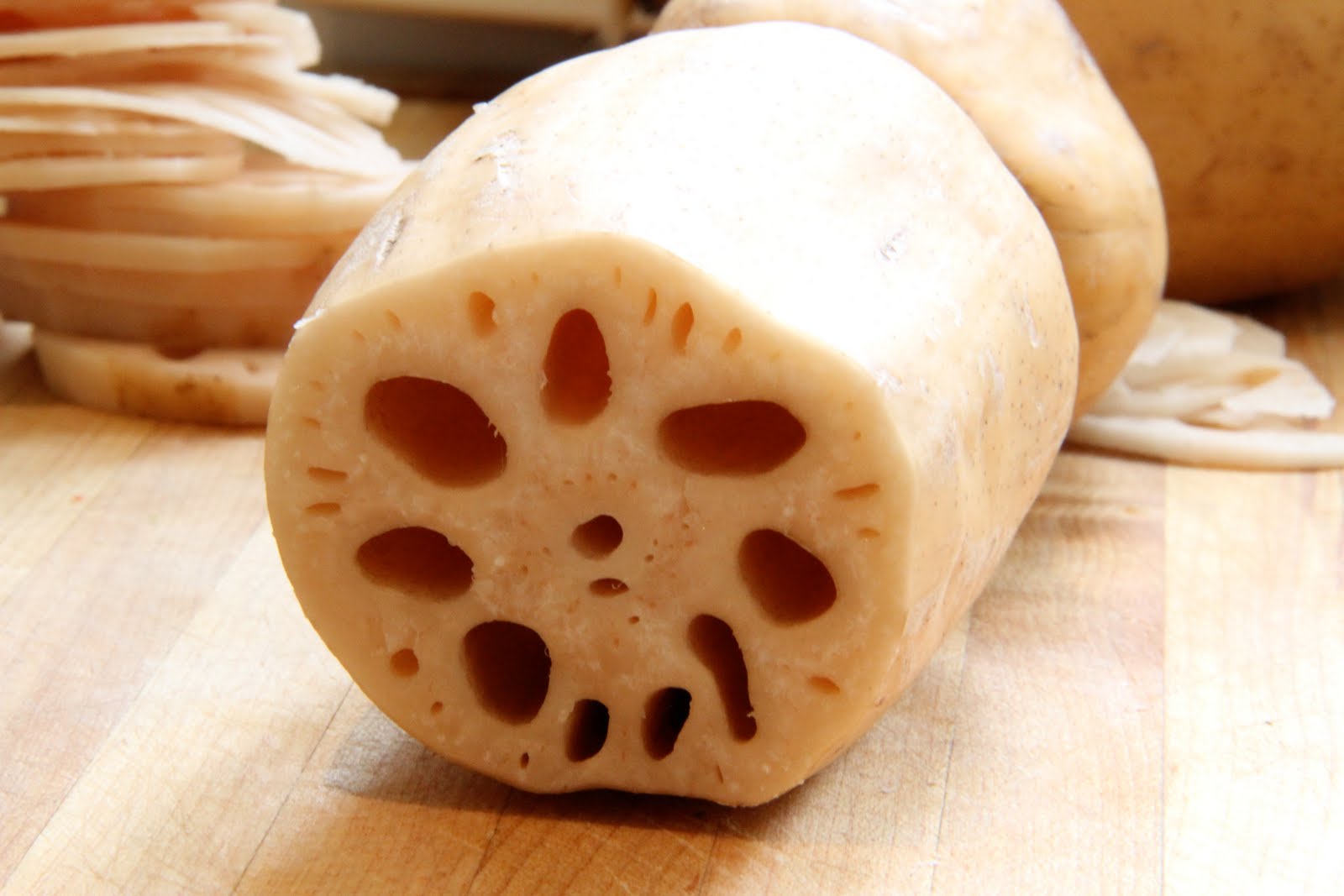
Lotus root
Table Of Content
Other Names
- In Japanese: Renkon
- In Chinese: Lianou
- In Urdu: Kanwal Kakri
- In Telugu: Tamara Kaada
- In Hindi: Kamala Jara
Description
The long woody roots have segmented rhizomes arranged in a sausage pattern.
Size: It grows about 4 feet long with the segmented rhizomes having a length of 10 to 20 cm and a diameter of 6 to 10 cm.
Shape: The long and tubular roots have symmetrically arranged air canals running along its length and giving it a unique appearance.
Color: The fresh roots have a brownish orange tinge whereas the matured ones are dark brown.
Taste: The fleshy root is sweet and crunchy with a flavor similar to the water chestnut.
Nutritional Value
The nutritional value of 100g of raw lotus root has been given below
| Nutrients | Amount | Recommended Daily Value |
| Carbohydrate | 16.02g | – |
| Dietary fiber | 3.1g | – |
| Sugar | 0.50g | – |
| Energy | 278Kj (66kcal) | – |
| Protein | 1.58g | – |
| Fat | 0.07g | – |
| Water | 81.42g | – |
| Vitamin B1 (Thiamine) | 0.127mg | 11% |
| Vitamin B2 (Riboflavin) | 0.01mg | 1% |
| Vitamin B3 (Niacin) | 0.3mg | 2% |
| VitaminB5 (Pantothenic Acid) | 0.302mg | 6% |
| Vitamin B6 | 0.218mg | 17% |
| Vitamin B9 (Folate) | 8ug | 2% |
| Vitamin C | 27.4mg | 33% |
| Iron | 0.9mg | 7% |
| Phosphorous | 78mg | 11% |
| Potassium | 363mg | 8% |
| Zinc | 0.22mg | 10% |
| Manganese | 45mg | 3% |
| Calcium | 26mg | 3% |
Health Benefits
Helps in Digestion: The fleshy root is rich in dietary fiber and therefore helps in reducing constipation and regulating bowel movements by helping in the peristaltic motions in the muscles of the intestine.
Controlling diabetes: The rich fiber content also makes it a good choice of root vegetable for those fighting diabetes.
Rich in Vitamin C: Hundred grams of this root contain 73% of the daily required value of Vitamin C. This antioxidant rich property helps to maintain the different organs of our body, skin, blood vessels and also regulates the immune system.
Helps to prevent cancer: The presence of antioxidants helps in neutralizing the free radicals, preventing cancer.
Good Source of Vitamin B6: The root is rich in Vitamin B6 (pyridoxine) that functions as an essential coenzyme, playing an important role in the synthesis of neuro-chemical in the brain that in turn controls the mood of an individual. This vitamin helps in reducing tension, headache, nervous disorders and also minimizes the chance of heart attack by controlling the homocysteine levels in the blood.
Controlling Weight: The low-calorie, dietary fiber-rich lotus root can help in losing weight and controlling obesity.
Rich in Minerals: The rich copper content in the root is a cofactor of some vital enzymes like cytochrome, c-oxidase and super oxide dismutase. It therefore helps in controlling cholesterol levels and reducing the problem of arthritis. The balanced ratio of 1:4 of sodium and potassium in the root accounts for its crunchy flavor. Sodium leads to its sweet taste while potassium combats the negative effects of sodium, maintaining heart rate and blood pressure.
Uses
Edible uses
- The young and tender rhizomes are eaten as salads whereas the matured ones must be cooked as they are bitter.
- Renkon or Lotus root chips are a popular snack in Japan.
- It can be deep fried, stir fried and braised, mostly being used as snacks or included in soups and prawn dishes.
- The Japanese use it while preparing tempura, their traditional dish of sea food or vegetables.
- It is also used in the kinpira style of Japanese cooking where root vegetables are sautéed or simmered.
- A dish of braised lotus root served with steamed rice is a popular item in Korean cuisine.
- The starchy flour from lotus root is used in baking and a batter for chicken and fish dishes in Chinese cuisine.
- The sweet, tangy taste of this root makes it to be used in pickling.
Medicinal Uses
- The juice of this root if consumed in small amounts can act as a cure to lung related problems and respiratory disorder.
- Drinking lotus root tea helps to cure cough.
- A combination of this root and kuzu (root extraction from some mountain plant in Japan) can relieve cold and fever.
- A plaster made out of the fresh root, white flour, grated ginger and water is applied on face to alleviate sinus problem.
- Lotus root powder, when consumed, helps in saliva secretion, improving appetite and functioning of the lungs.
Side effects
This root generally does not have any side effects. It is recommended to consult a doctor in case of any allergic reaction or adverse effects. Some parasites, like Fasciolopsis buski commonly found in aquatic plants, may be present in the root. Therefore, proper washing and cooking is required or else it may lead to fever, stomach ache and diarrhea.
During pregnancy
TheLotus root soup rich in Vitamin C and dietary fibers is considered a healthy dish for pregnant women. However, overconsumption should be avoided.
How to prepare and cook?
The roots should first be broken into separate parts at the intersection of their nodes before they are washed properly in cold running water. The inedible outer skin is to be peeled off after washing. In order to prevent a darkening in their color, they should be put in water along with a little vinegar after slicing. To be used in salads or a preparation that requires minimum cooking, it should be boiled in the mixture of vinegar and water for a few minutes to get rid of the tanned tinge while still retaining the crunchy texture.

Lotus Root Recipe
Recipes
- Renkon or lotus root chips
- Simple lotus root salad
- Lotus root dumplings
- Lotus root with sesame sauce
- Yeonkunjolim( Korean lotus root)
- Spicy lotus root salad
- Lotus root soup with peanuts
Where to buy?
The root can be found fresh or dried (canned, sliced, and frozen) in most of the Asian markets all over USA. It can also be purchased online. While buying them one should look for the fresh and light brown roots and avoid the cracked and spotted ones.
How to Store?
It should be wrapped in a damp cloth or paper towels and stored in the refrigerator. Fresh roots may be stored for a couple of weeks.
Substitutes
Jicama or Mexican yam and water chestnut can be good substitutes.
Interesting facts
- Lotus seeds are edible and popular as snacks, while the roasted ground seeds can be used as a coffee substitute.
- In ancient times lotus root powder would be sent to the king as a tribute.
- The lotus root powder is used to prepare a popular drink to treat guests in China.
Pictures
References:
http://www.nutrition-and-you.com/lotus-root.html
http://en.wikipedia.org/wiki/Nelumbo_nucifera
http://justhungry.com/how-cook-lotus-root-renkon
https://www.organicfacts.net/health-benefits/vegetable/lotus-root.html
http://recipeclout.india-server.com/lotus-root.html
http://www.wisegeek.org/what-is-lotus-root.htm
http://www.nutritionvalue.org/Lotus_root,_raw_nutritional_value.html
https://www.verywellfit.com/lotus-root-nutrition-facts-calories-carbs-and-health-benefits-4772425
http://www.cooksinfo.com/lotus-root-flour
- by Mumpi Ghose
- November 29th 2014

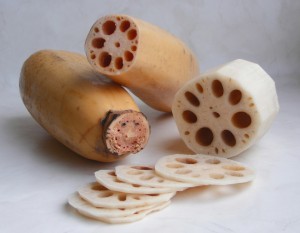
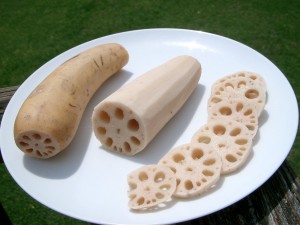
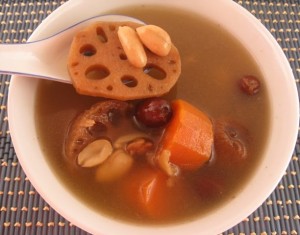

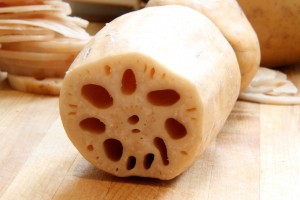
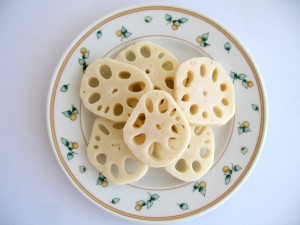


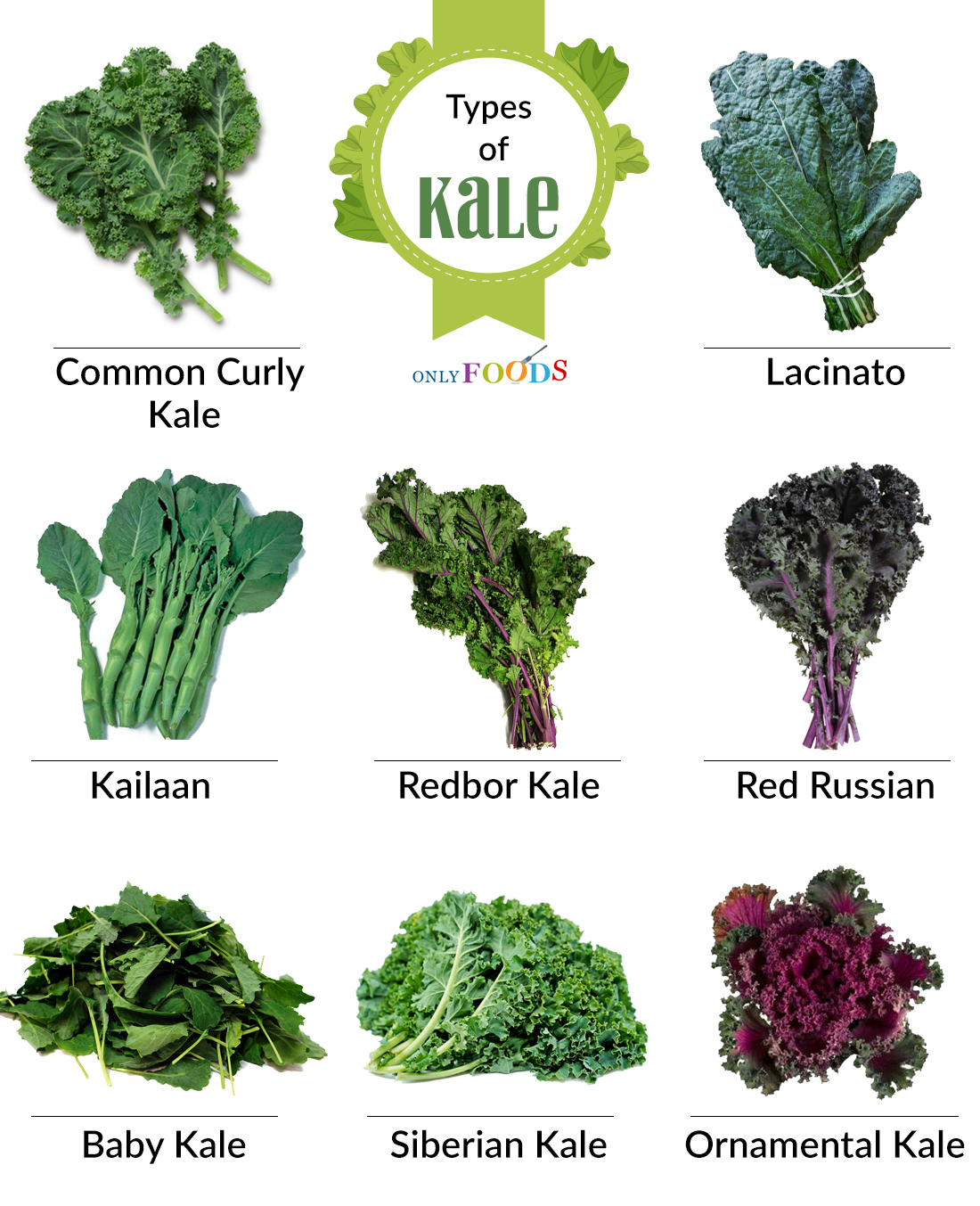
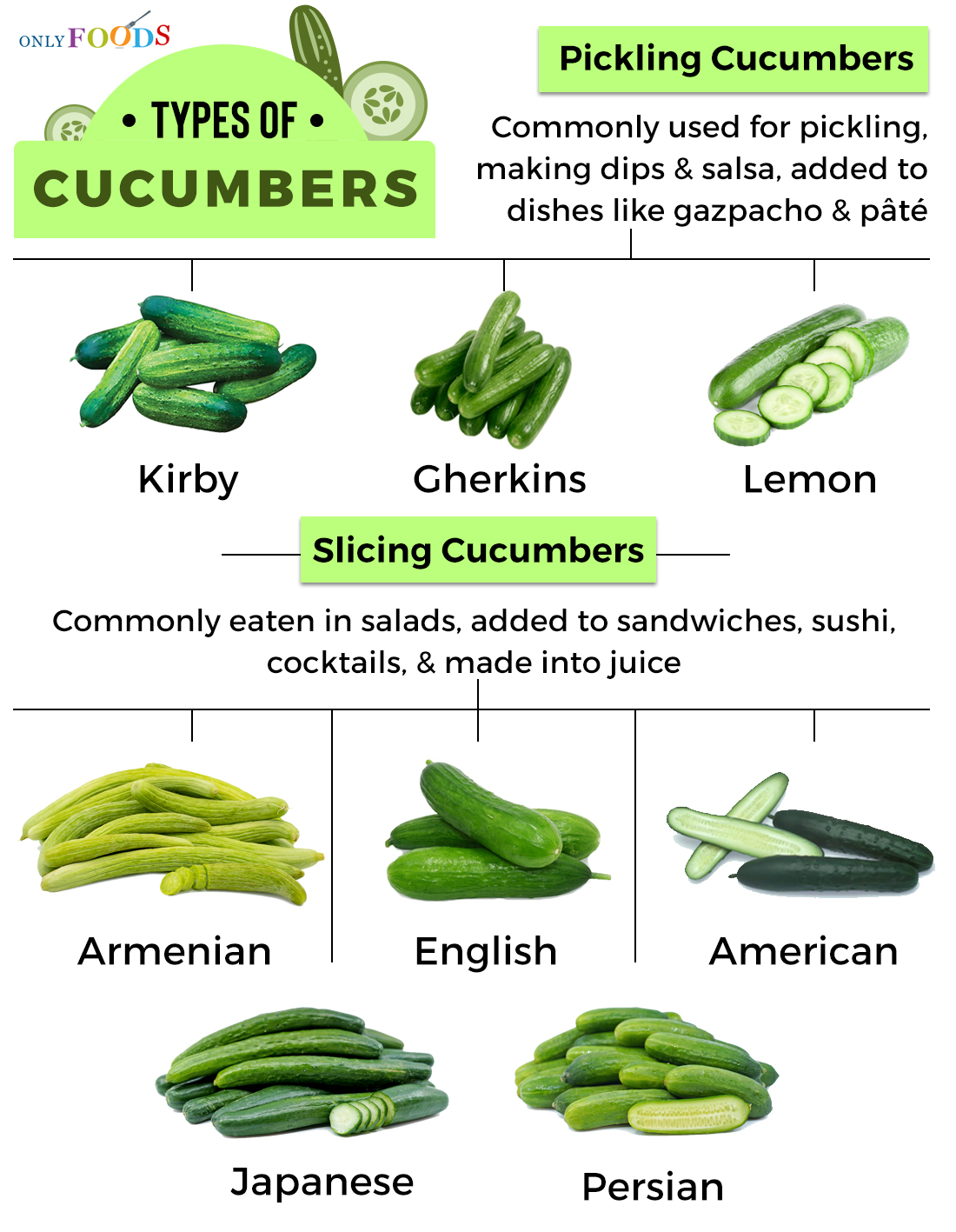


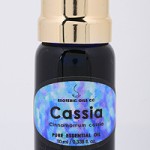
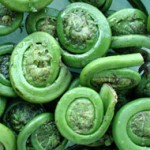

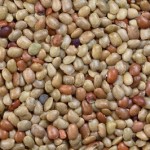
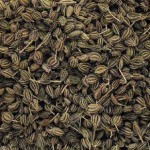

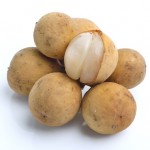

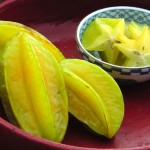
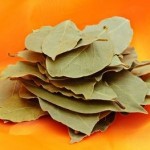



Leave a Reply